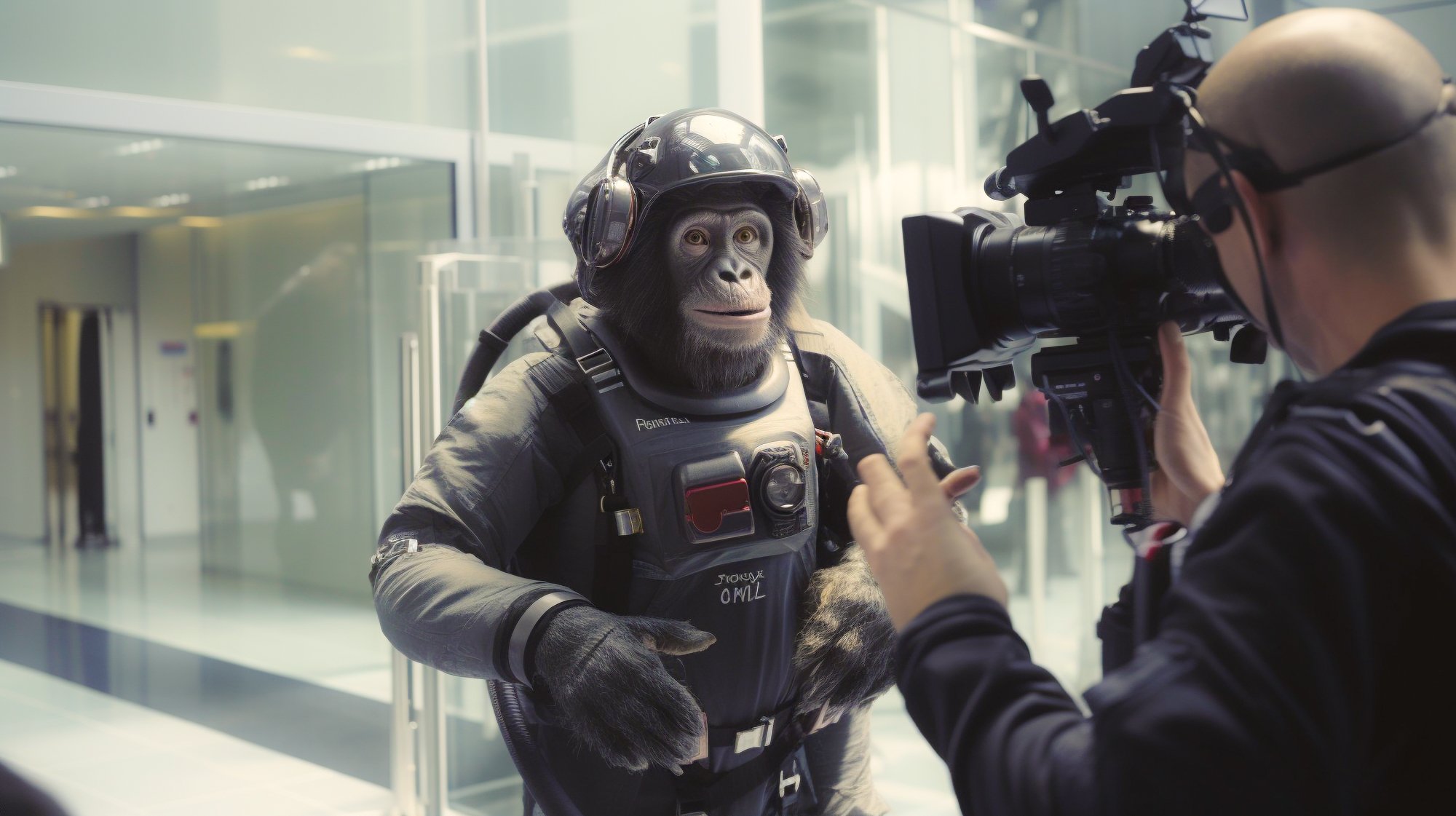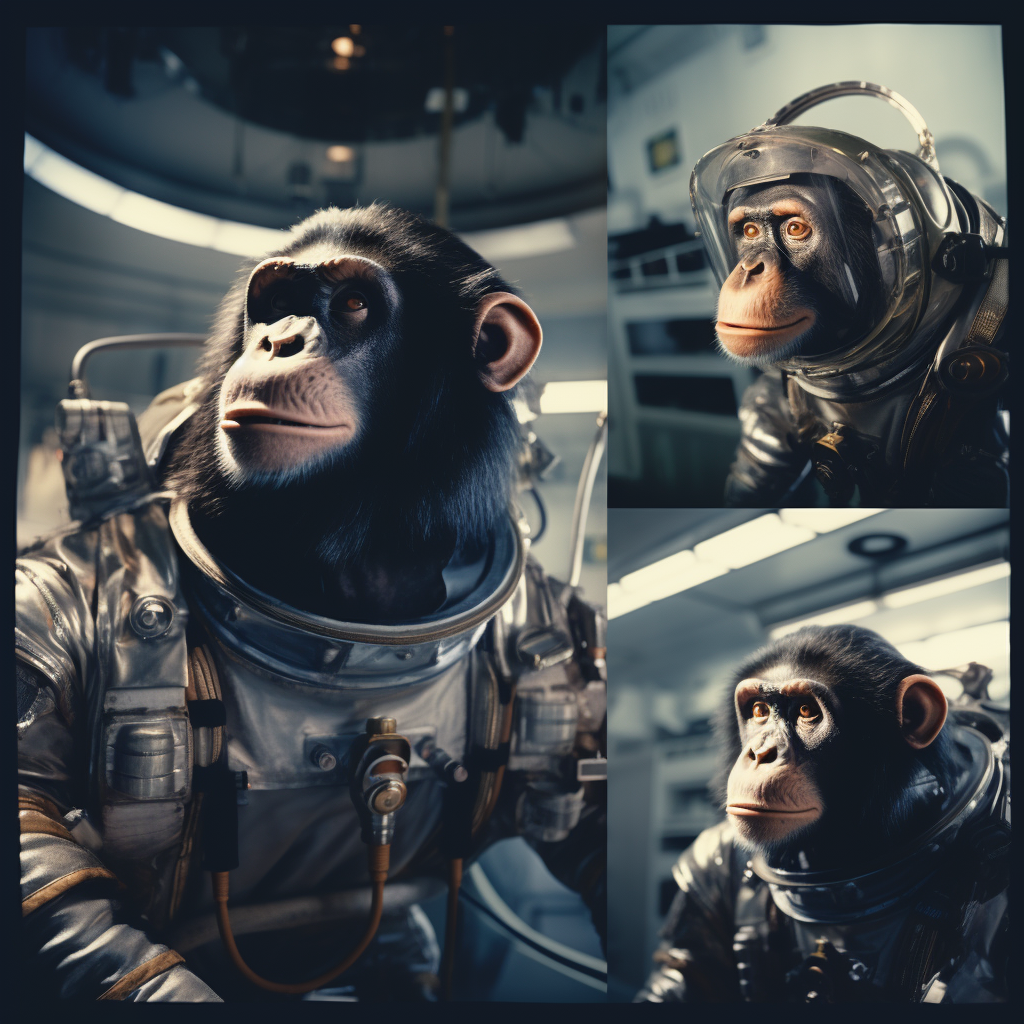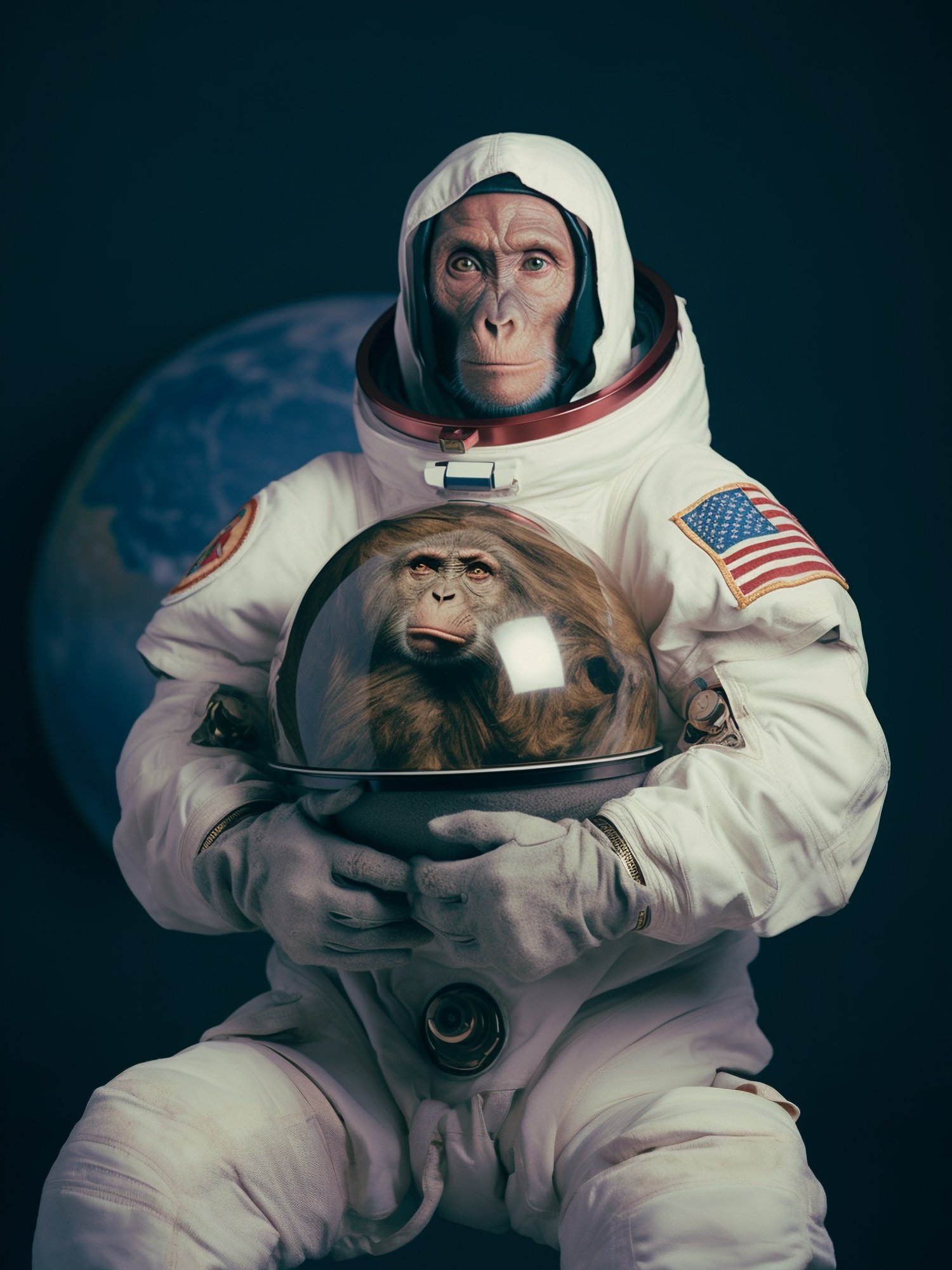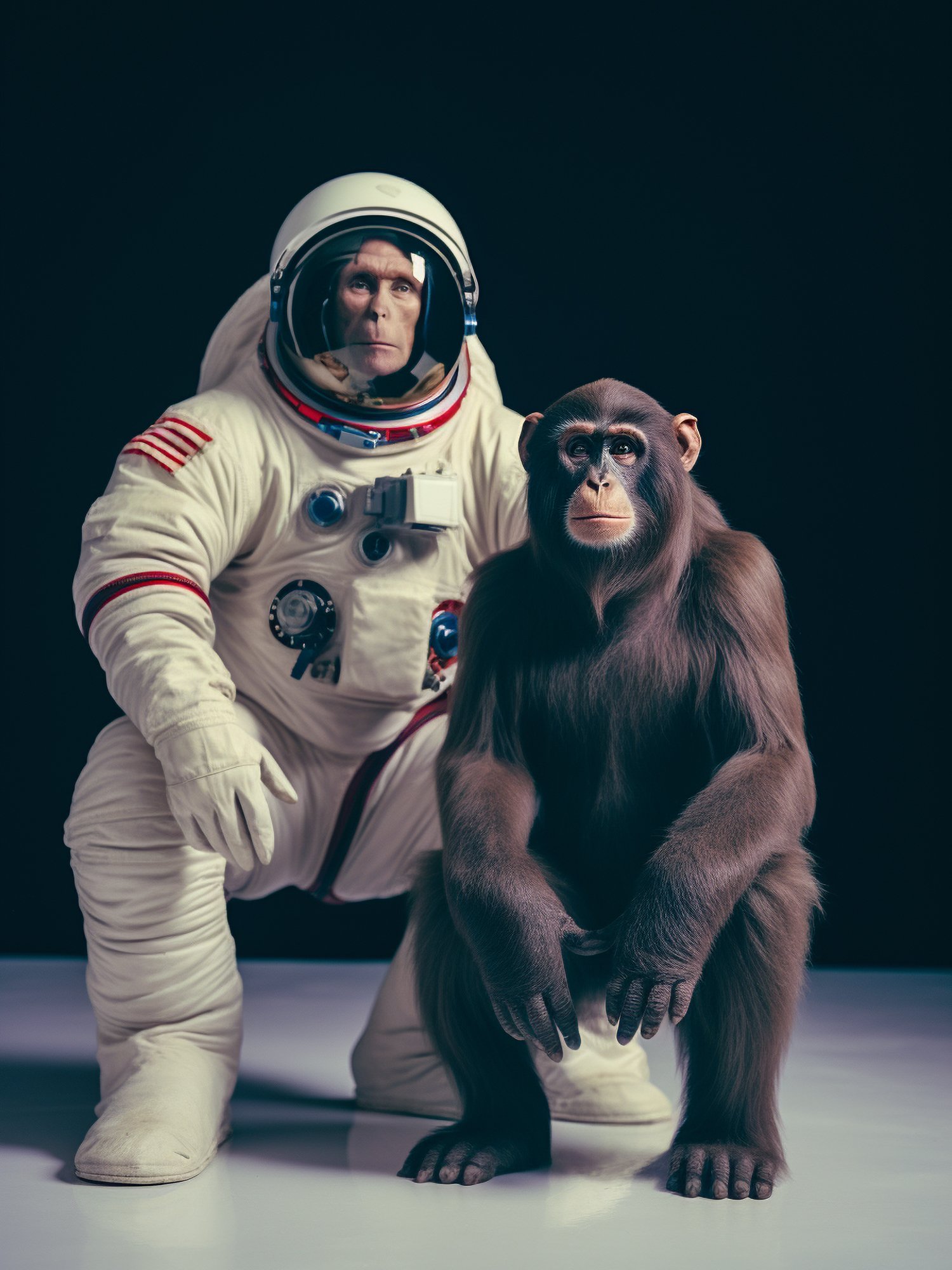“ Our interpretation of Reality Is Authored by the Mind, infused with Cultural Narratives, and Subject to the Shadows of Bias and Prejudice”
Reality often proves so astonishingly surreal that, on occasion, the fictional realm eclipses the actual in terms of authenticity. The authenticity of an image is, most times, determined upon the trust we place in its portrayal.
The fiction (?) of a monkey becomig human is no more incredible than the reality of the CIA's texts recounting experiments on primates to explore drugs for intelligence purposes. It is hard to believe that “Nim Chimpsky”, the monkey could talk - as one university professor tried to prove, or that “Congo” the monkey could paint.
“Congo”, the monkey painter, sold his work for 14,000 pounds sterling, which proves that the monkey is not the only one who can paint.
The possibility of re-creating a fictitious reality or creating “real fiction” is almost the mark of our time challenging our understanding of identity, perception, and the nature of truth. We voraciously consume the content that media outlets present to us, as we define ourselves by our immediate appearance, by what we do or show.
The line that once separated fact from imagination has grown faint and we find ourselves cast as actors trying to define, in front of others, an identity that we find increasingly difficult to recognize.
*Important Disclaimer: Images created with AI, some tweaked and/or fine-tuned with Photoshop, other documents and images entirely created with Photoshop and some downloaded from the CIA public files and news from the internet.
“n”
-
In the 1970s, Nim Chimpsky became the most famous chimpanzee in the world for a unique and groundbreaking reason. He was the central figure in a pioneering linguistic experiment conducted by American psychologist and primatologist Herbert S. Terrace. The experiment aimed to explore whether a chimpanzee could acquire human language to a degree that it could effectively communicate with humans.
Nim Chimpsky was born in 1973 at the Institute for Primate Studies in Norman, Oklahoma. Named after the renowned linguist Noam Chomsky, his moniker was a playful nod to the nature of the experiment. From a young age, Nim was taken from his mother and placed into a human environment, primarily under the care of a former psychology student, Stephanie LaFarge. Nim was taught American Sign Language (ASL) in an attempt to bridge the communication gap between humans and chimpanzees.
Over the course of several years, Nim Chimpsky acquired a considerable ASL vocabulary and demonstrated the ability to combine signs into rudimentary sentences. His progress in language acquisition was remarkable, though some critics questioned the extent to which Nim truly grasped the nuances of language, as his utterances often appeared to be prompted by rewards or mimicry rather than genuine comprehension.
Despite the challenges and debates surrounding Nim's linguistic development, his journey captured the imagination of the public and the scientific community. His charisma and playful personality endeared him to those who worked with him, and he even formed close bonds with some of his human caregivers.
However, as Nim Chimpsky grew older and stronger, his interactions with humans became increasingly difficult to manage. He displayed aggressive behaviors, which led to concerns about the safety of those working with him. As a result, Nim was moved from home to home and encountered a series of caregivers throughout his life.
Nim Chimpsky's story is a poignant reminder of the complexities of studying animal cognition and communication.
“I”
-
Congo, the artistic prodigy, captured hearts and challenged perceptions in the mid-20th century. Born in 1954 at the London Zoo, Congo's journey into the world of art was an unexpected one. Encouraged by British zoologist Desmond Morris, he picked up pencils and paints, creating abstract works that intrigued and bewildered. His art, characterized by bold strokes and vibrant colors, led to a controversial exhibition, "Paintings by Congo," at the Institute of Contemporary Arts in London.
Critics debated whether Congo's creations were random scribbles or genuine expressions of creativity. Regardless, Congo's legacy endures, challenging notions of what it means to be an artist and prompting ethical discussions about animal involvement in the art world.
The gallery’s exhibition Ape Artists of the 50s (2005), which showed the work of Congo alongside two other primates, was held in the same year as the momentous Bonhams auction of Congo’s work, in which three of the chimp’s paintings were sold for £14,400, more than 20 times their estimate.
Surrealist artist and zoologist Desmond Morris is selling his private collection of paintings and drawings by Congo the chimpanzee, with whom he famously worked from 1956-1959, observing and recording the ape’s interest in creating ‘art for art’s sake’ and sharing his findings with the public through books and television.
The Mayor Gallery’s exhibition of some 55 paintings, pastels and by the chimp will be the last opportunity to acquire work by Congo, who made some 400 artworks during the experimental three-year period.
Morris, whose research methods were extremely rigorous, worked with a number of other apes over the years, but none exhibited Congo’s ability to focus.
“Z”
“F”
“XX”
“L”
Almost Human, Almost Real
Chimpanzees and the Extraneous Object:
In stark contrast, the introduction of the extraneous object into the chimpanzee habitat elicited responses that underscored their unique cognitive landscape. Initially, the chimpanzees displayed wariness towards the foreign object, approaching it with cautious curiosity. Some individuals vocalized their uncertainty, while others watched from a distance.
As time passed, the chimpanzees exhibited a gradual but discernible shift in their behavior. They began to investigate the extraneous object, using sticks and leaves as tools to interact with it. Some even collaborated, indicating a level of social learning and cooperation similar to that observed in human groups.
Post-Interaction Assessments:
Following the interaction phase, we returned to our initial intelligence assessments. The human participants, after their engagement with the common object, demonstrated improvements in their problem-solving abilities, particularly those who had initially struggled. This suggested that the introduction of novel stimuli could enhance human cognitive flexibility.
For the chimpanzees, the post-interaction cognitive tests yielded fascinating results. Their problem-solving skills had notably advanced, and their adaptability to unfamiliar objects in their habitat had significantly improved. This demonstrated that chimpanzees, like humans, can rapidly adapt to novel stimuli, challenging the conventional notions of cognitive superiority in humans.
Conclusion:
This groundbreaking experiment not only sheds light on the comparative intelligence of humans and chimpanzees but also challenges preconceived notions about the cognitive capacities of both species. Our findings suggest that chimpanzees exhibit remarkable problem-solving abilities and adaptability when confronted with novel stimuli in their natural habitat, highlighting the complexity of their cognitive landscape.
As we continue to unravel the mysteries of intelligence across species, it becomes increasingly evident that the lines separating us from our primate cousins are blurred by shared traits of curiosity, adaptability, and the capacity for cooperation. This experiment serves as a testament to the extraordinary cognitive potential inherent in the natural world, transcending the boundaries of our own species.
“....it becomes increasingly evident that the lines separating us from our primate cousins are blurred by shared traits of curiosity, adaptability, and the capacity for cooperation.”
Experiment a7.-26/3. Mechanical Evolution.
““...COVERT SPY MISSION...
TRAINED MONKEY ASTRONAUT ...
MANIPULATE PUBLIC OPINION...
UNDER THE GUISE OF A MOVIE STAR PERSONA..””
Mission Objectives:
1. Infiltration: Deploy a highly skilled monkey astronaut named "Noa Chupsky" into the entertainment industry under the persona of a charismatic and popular movie star.
2. Gather Intelligence: Use Noa Chupsky's position to access influential individuals and gatherings, allowing for the collection of valuable intelligence on potential threats, enemy agents, and their activities.
3. Disruption: Disrupt the enemy's plans and operations by using Noa Chupsky's status to divert resources and attention away from their objectives.
Mission Details:
https://www.life.com/animals/life-with-the-astrochimps-early-stars-of-the-space-race/ and CIA released documents
Central Inteligence Documents - CIA- Released Documents
Noa Chumpski playing: Nearly Human, an Actor’s Life
Almost Human: an Actor’s Life. Story Board, phase I
“Chimpstronaut, Austronapee Chimponaut Astrochimpan Chimpastron Nautchimpzee Astronapeezee Chimponautic Austronapeez Chimpastronaut Chimpnaut Astrimpanzee Nautchimp Chimparonaut Astrochimp Austronaut Chimponastra Astronkee Chimpstronomer Astronapeeze Chimpspace Astrochimpzee Chimponautics Austronkey Chimanaut Spacechimp Astronapeezo Chimpassonaut Astronanzee Chimpstronautics Simienauts AstroSimiens Baboonauts Simienastronauts Astronomboons Baboonnautics AstroSimienae Simienstellers”
Almost Human - An Actor’s Life - 2022
“Nim Chumsky Nim Chumski Nim Chumpsky Nim ChumpskiNim ChimpskieNim ChimzkyNim ChimzkiNoam ChumskyNoam ChumskiNoam ChumpskyNoaChumpskiNoamChomskiam ChomskeyNoam Chomsko”
AS IT WAS. AS I REMEMBER IT TO BE.


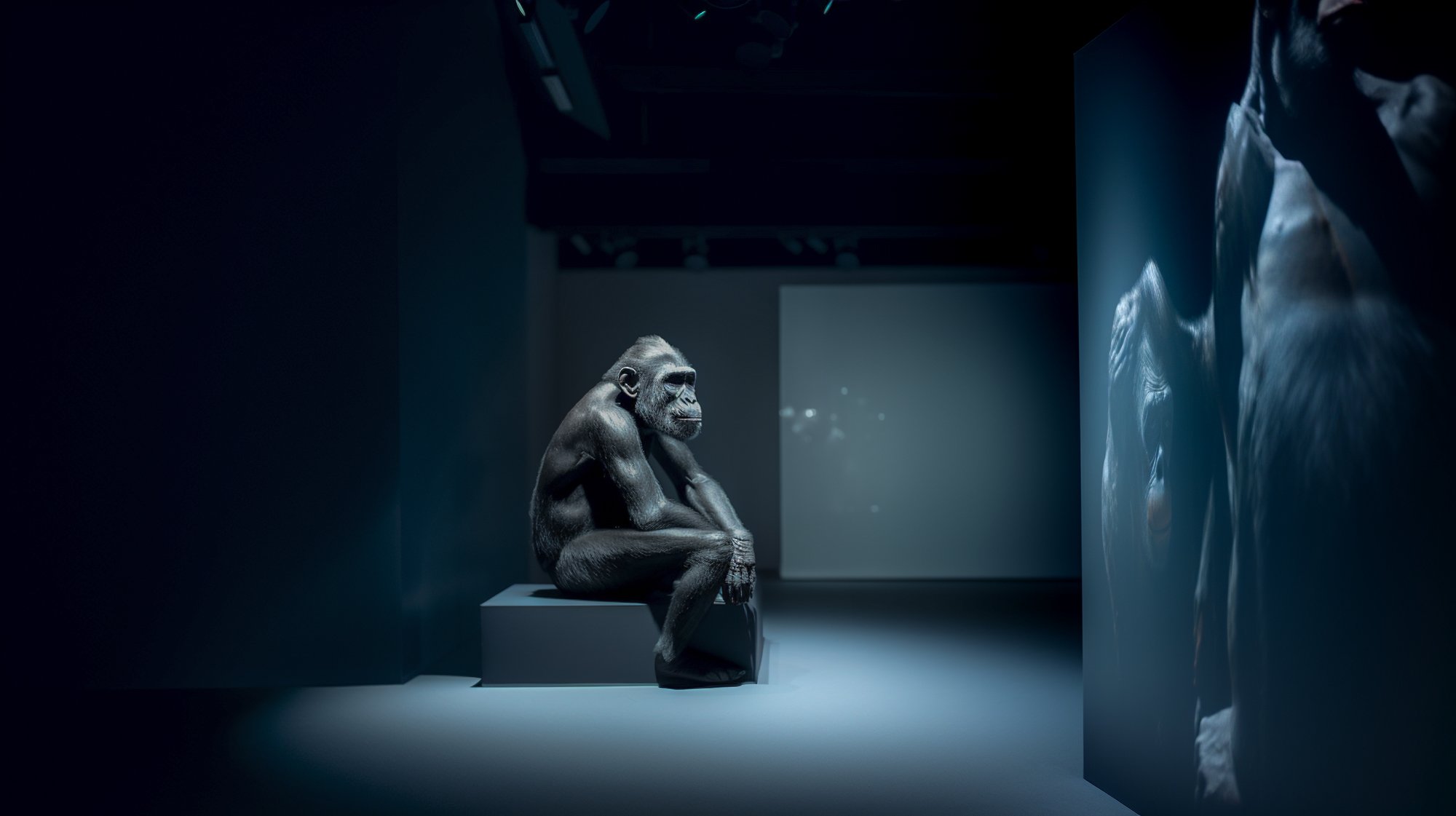
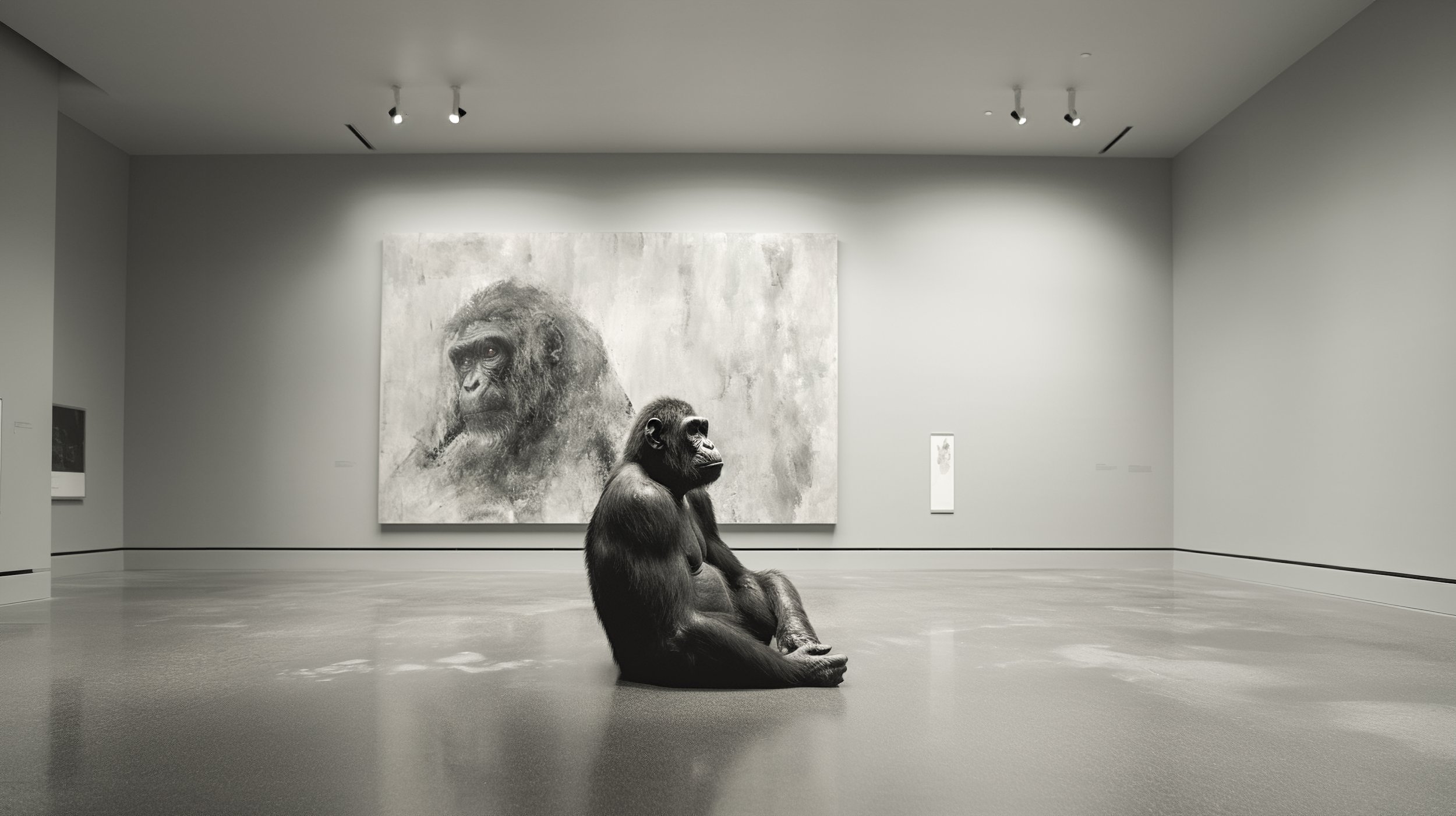
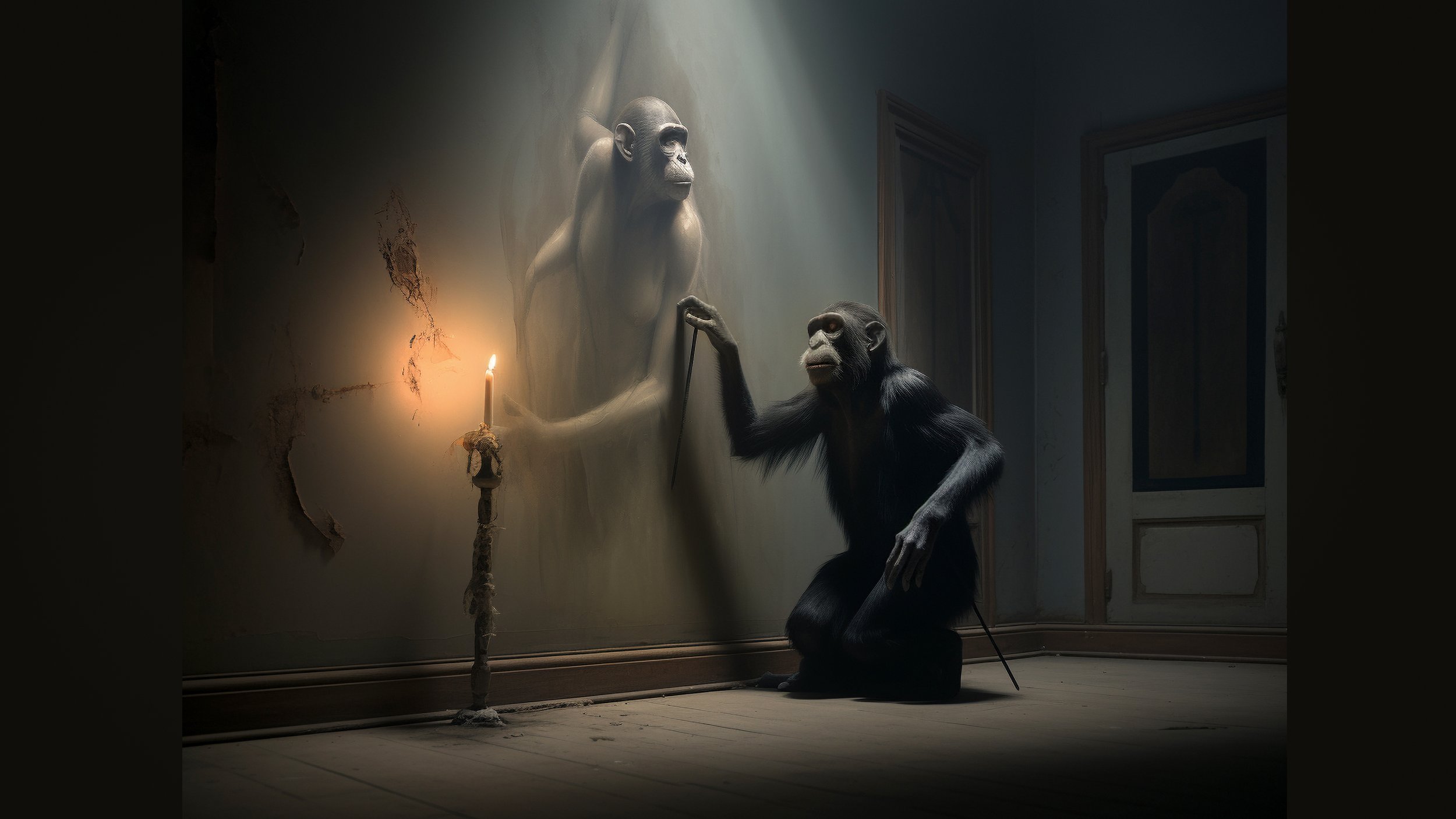
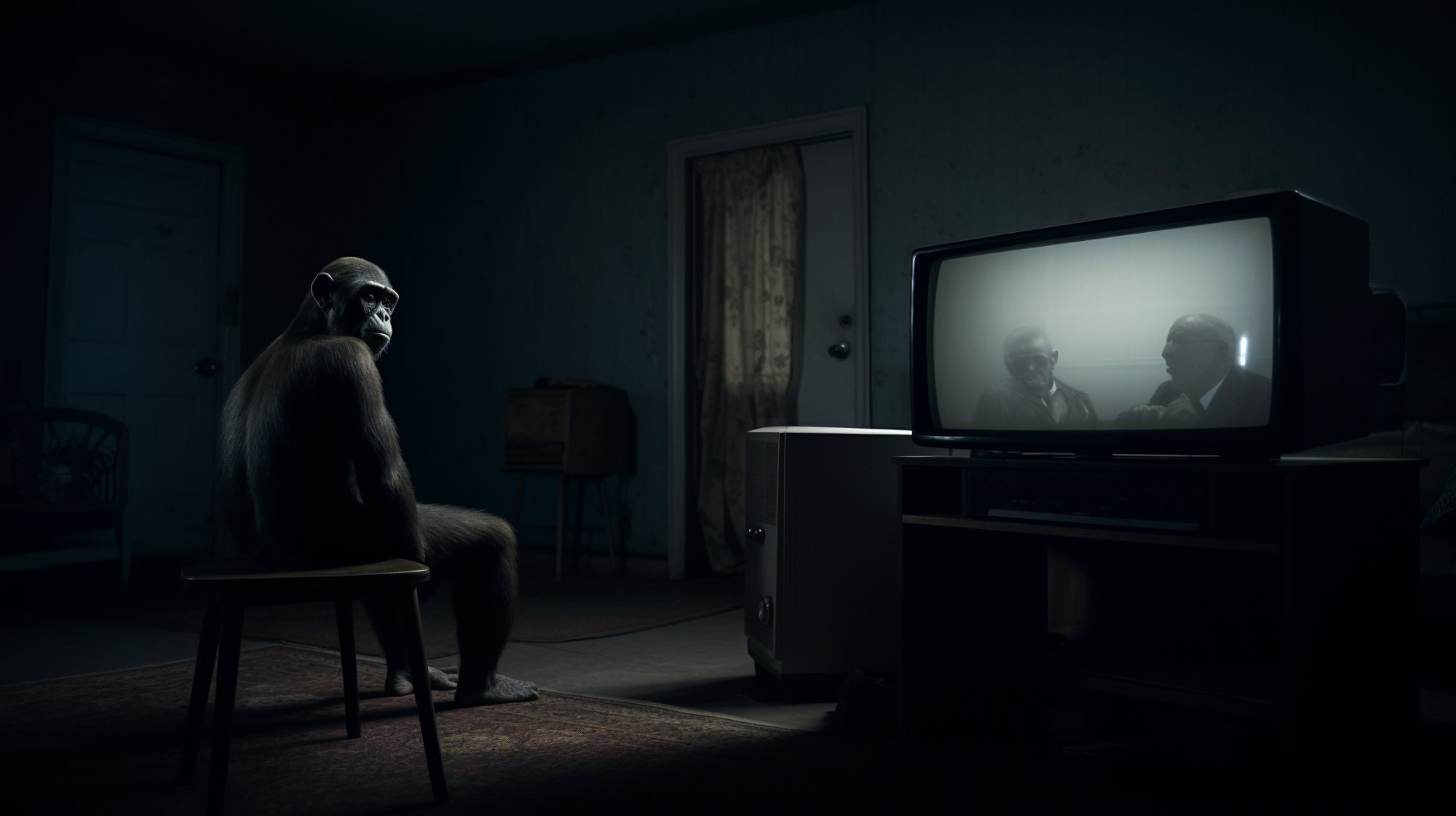


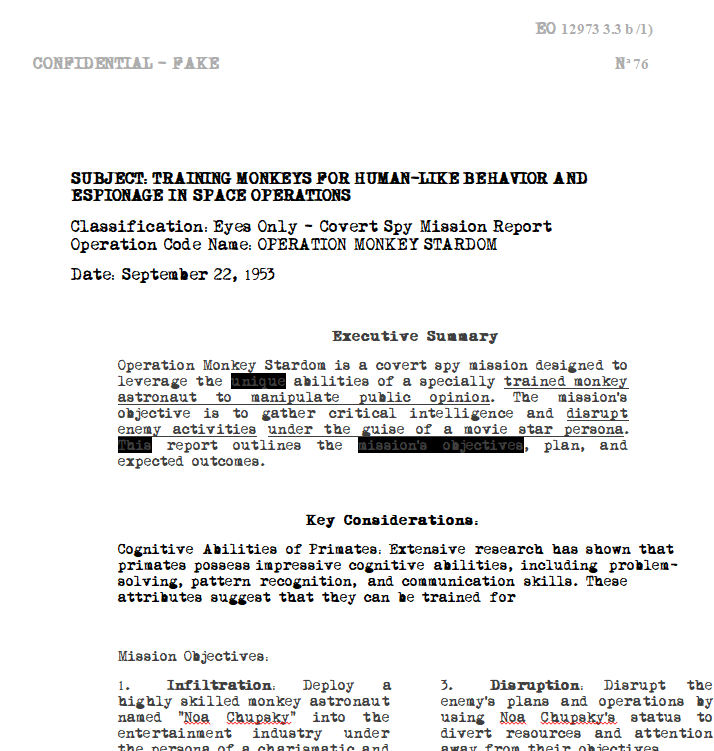
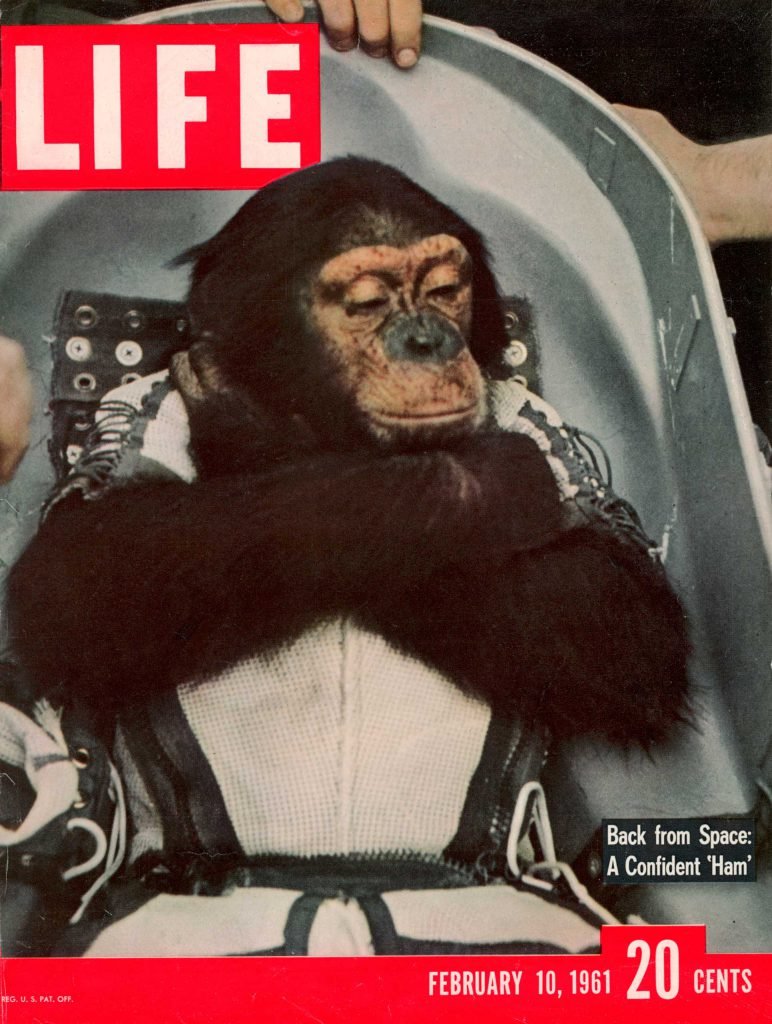
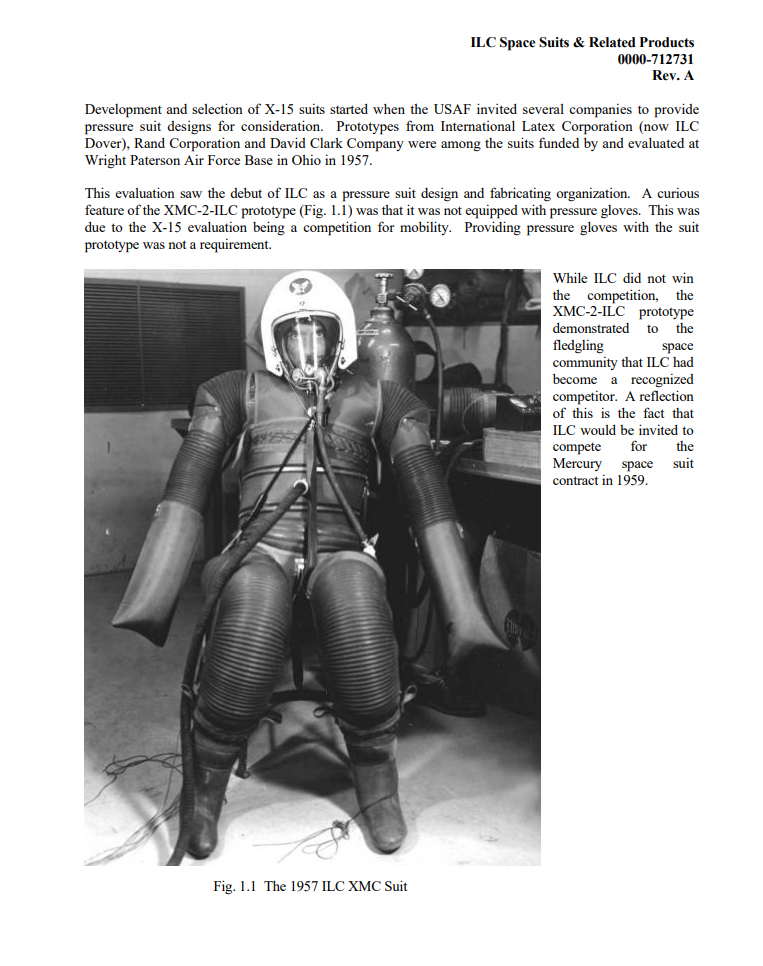
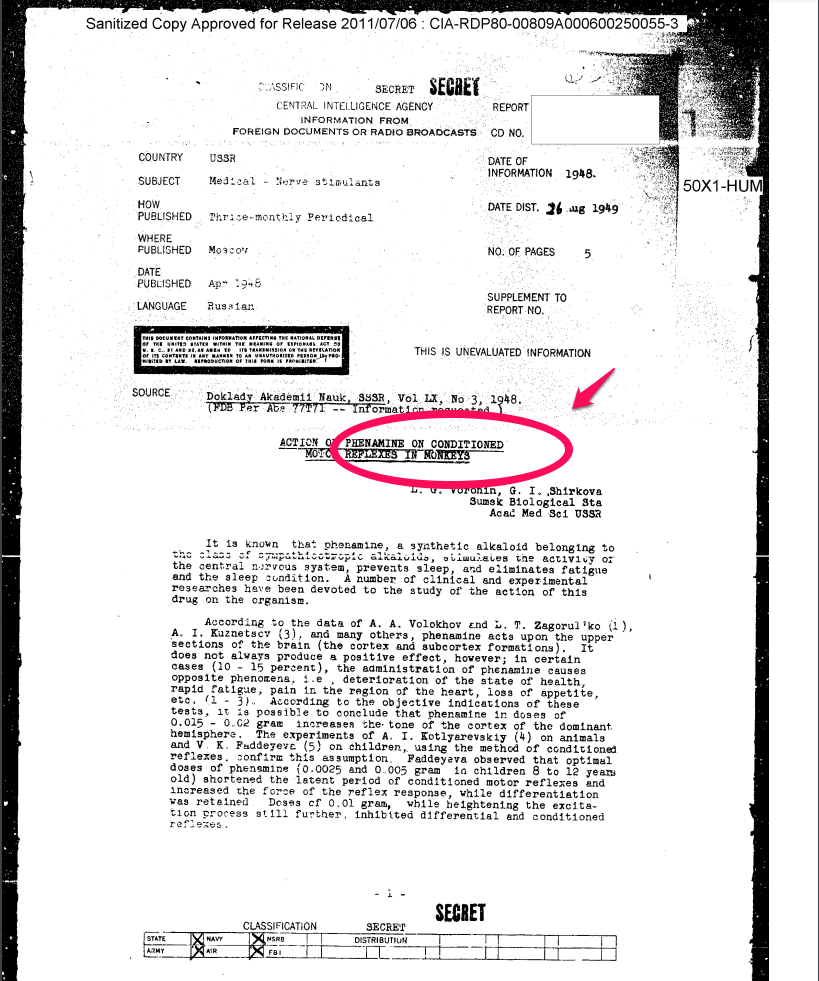

![GUIDED ANIMAL STUDIES WIT[15687531]_page-0001.jpg](https://images.squarespace-cdn.com/content/v1/5eef819dc99a195b4fe0e67c/1695371764408-G5KZ5I4I98Z6PTU0IOCK/GUIDED+ANIMAL+STUDIES+WIT%5B15687531%5D_page-0001.jpg)
![GUIDED ANIMAL STUDIES WIT[15687531]_page-0002.jpg](https://images.squarespace-cdn.com/content/v1/5eef819dc99a195b4fe0e67c/1695371763721-Z4FMLMBLLAA9ZEYRGX7X/GUIDED+ANIMAL+STUDIES+WIT%5B15687531%5D_page-0002.jpg)
![GUIDED ANIMAL STUDIES WIT[15687531]_page-0003.jpg](https://images.squarespace-cdn.com/content/v1/5eef819dc99a195b4fe0e67c/1695371766848-OK5VNJLLH8YEQQKJS41Y/GUIDED+ANIMAL+STUDIES+WIT%5B15687531%5D_page-0003.jpg)
![GUIDED ANIMAL STUDIES WIT[15687531]_page-0004.jpg](https://images.squarespace-cdn.com/content/v1/5eef819dc99a195b4fe0e67c/1695371767622-X1S5YTEO0UMUL07Z5GXA/GUIDED+ANIMAL+STUDIES+WIT%5B15687531%5D_page-0004.jpg)


